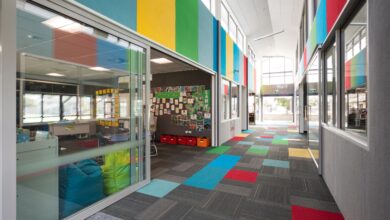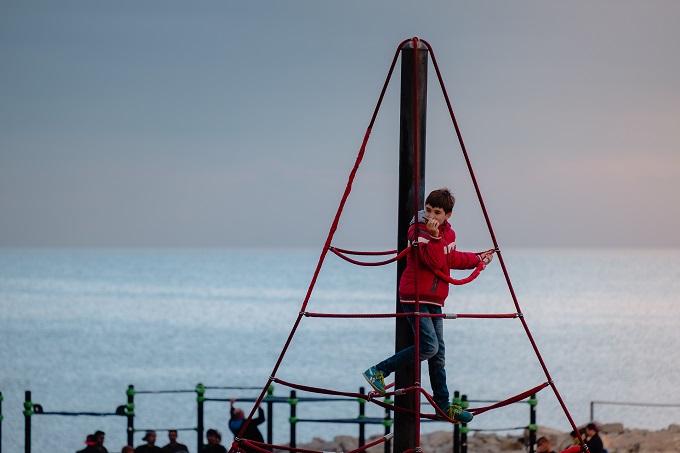
Although many schools in the west, along with private schools in the developing world, have continued some school activities online, more than 50% of learners worldwide do not have a household computer. The absence of face-to-face learning and opportunities for playing with friends will have hugely impacted child mental health.
Countries are taking different approaches as to when, where and how to reopen schools, and some places are emphasising the benefits of outdoor learning.
Research has shown that an outdoor environment can improve children’s motivation and well-being, and can contribute to increasing children’s physical activity and learning outcomes. Learning in nature has been shown to reduce stress and boost mental well-being.
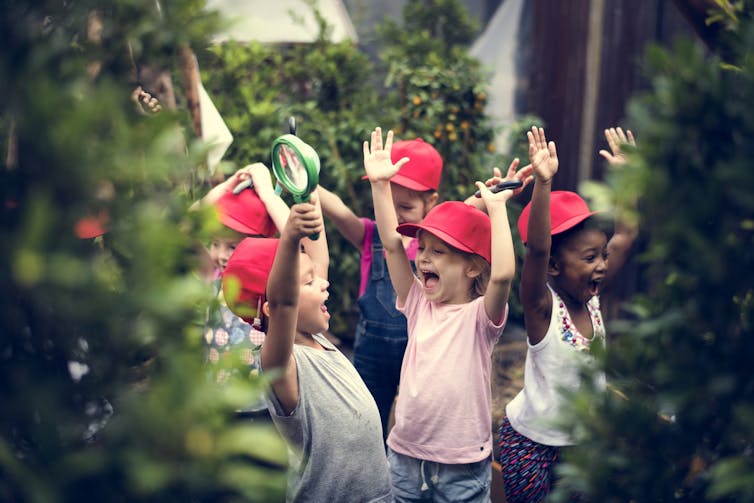
Outdoor learning was traditionally practised in countries across the African and Asian continents, but is increasingly valued less. In many cases, it is only perceived as an option when there is no functioning classroom. But now, more than ever, the benefits of outdoor learning must be capitalised on all over the world.
Bangladesh
I have been researching outdoor learning environments for more than 10 years. While most research in this area is concentrated in western countries, my own has focused on Bangladesh.
In Bangladesh the net enrolment rate at primary schools is nearly 100%, but only 32% of the children reach higher secondary level (typically completed at ages 16-18). There are many reasons for this high dropout rate, including poverty and child marriage.
But one reason that is rarely considered is the quality of the learning environment. Evidence shows many students drop out because they do not feel attracted to school and did not like the traditional teaching and learning environment.
Teaching and learning outdoors has been core to the education system in the Indian subcontinent and was practised widely before the education system was formalised. It is still being practised in the town of Shantiniketan, India, established by the Nobel Laureate poet and philanthropist Rabindranath Tagore. But the idea is not mainstream and the political, physical and social infrastructure to support its wider implementation is absent.
I looked into whether learning in an outdoor environment can improve children’s academic attainment, motivation and play in a Bangladeshi primary school as part of my PhD. School grounds in Bangladesh are largely barren fields without any features. Clearly this needed to change if outdoor learning was to be encouraged. The school I worked with was a primary school 80 kilometre from the capital city Dhaka.
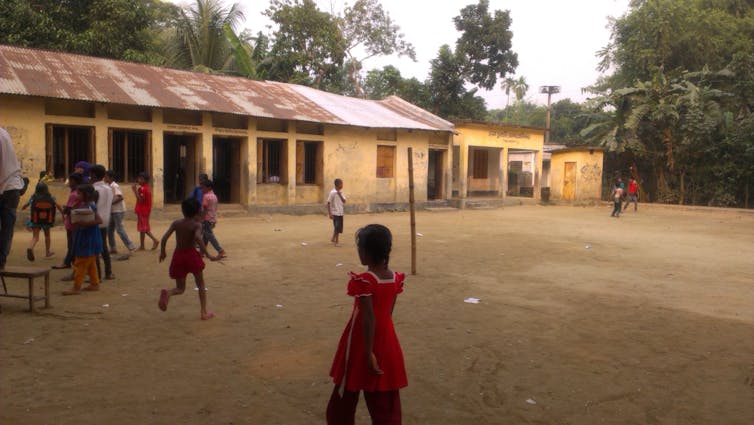
I wanted the children’s input for the redesign. I asked Grade IV children (eight- to 12-year-olds) what they would like to have in their playground for both learning and play. The children drew pictures and shared their thoughts. I brainstormed with teachers separately and asked what they would need in the outdoor learning environment in order to take curricular teaching and learning outdoors.
Then we all participated in a model making workshop, led by the children. I supplied materials based on the drawings made by children and suggestions offered by teachers. We have presented the model to the local community who came forward to help us with whatever resources they could offer.
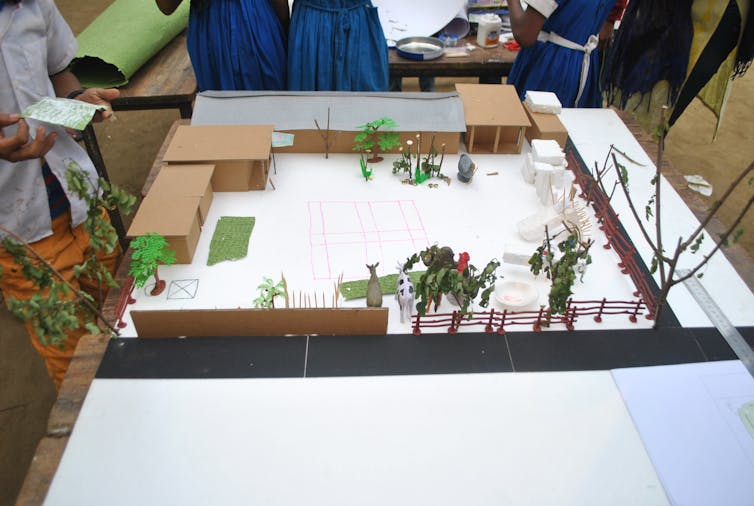
A new classroom
The children wanted places to explore and experiment, to play and learn together, to challenge them physically and intellectually, to make things and be creative, to connect with nature, to be alone and to reflect. Studies with children from different parts of the world have yielded similar results, showing these preferences are universal.
Teachers, meanwhile, told me that nature can offer opportunities to try out science. They wanted different types of vegetation and a garden in the schoolyard. They requested an area with different loose materials such as twigs, branches, seeds and egg crates to help them demonstrate number theories and other mathematical problems. They also asked for some group learning settings for group activities and an outdoor classroom.
All of these preferences were then taken into account when the Bangladeshi architect, Fuad Abdul Quaium, and myself designed the school ground. We hired local masons and used low-cost materials and technology. The children designed a mural. The school ground was ready for use in January 2015. The teachers led children outdoors regularly for their maths and science lessons.
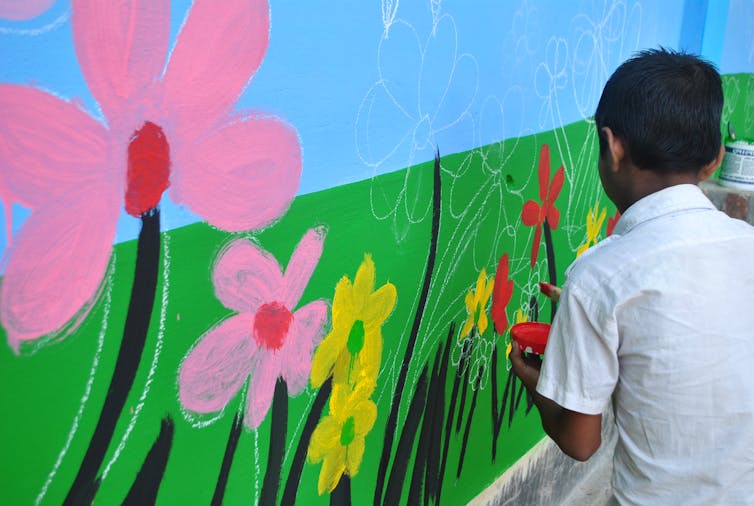
My research showed that the children’s attainment in maths and science improved after teaching and learning outdoors. The Grade IV children performed significantly better in maths and science compared to a comparable school which had had no change in the environment.
Hands-on learning outdoors made learning fun and engaging for everyone, but particularly benefited underachievers. We found that children who didn’t interact much in the classroom setting were more pro-active and participated more in their outdoor sessions.
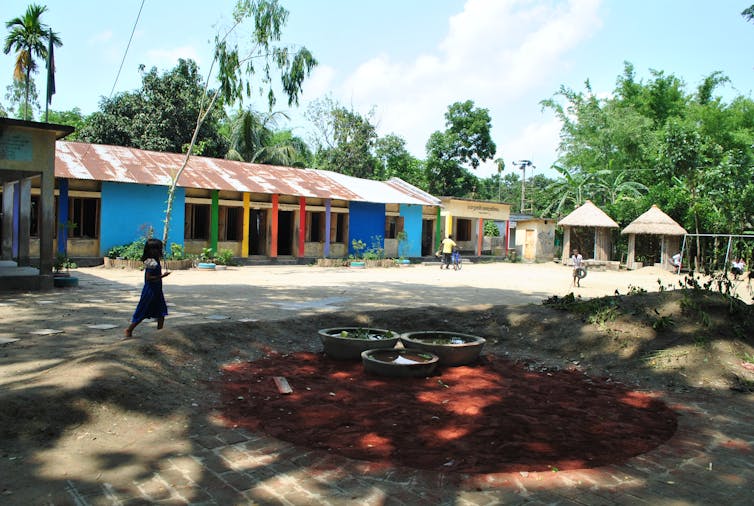
An outdoor future
Outdoor classrooms can also provide the space to maintain social distancing while learning. But the school ground should be designed in a way to support teaching and learning, and teachers need training in use of their school ground and surroundings for teaching.
My research strengthens the already existing evidence on benefits of outdoor learning. The study also generates new evidence for its use outside western countries, suggesting outdoor learning has the potential to improve the quality of education all over the world.![]()




